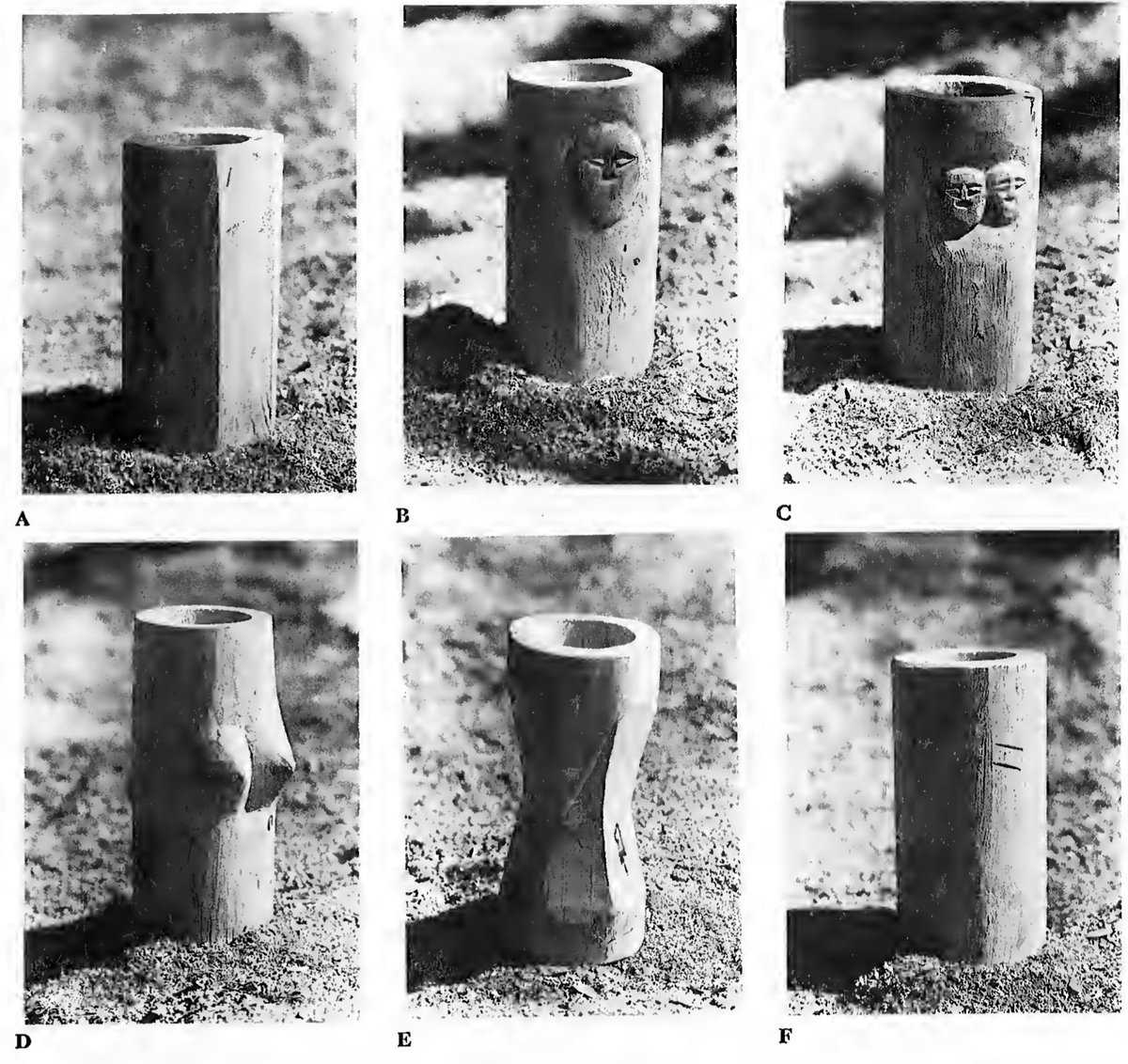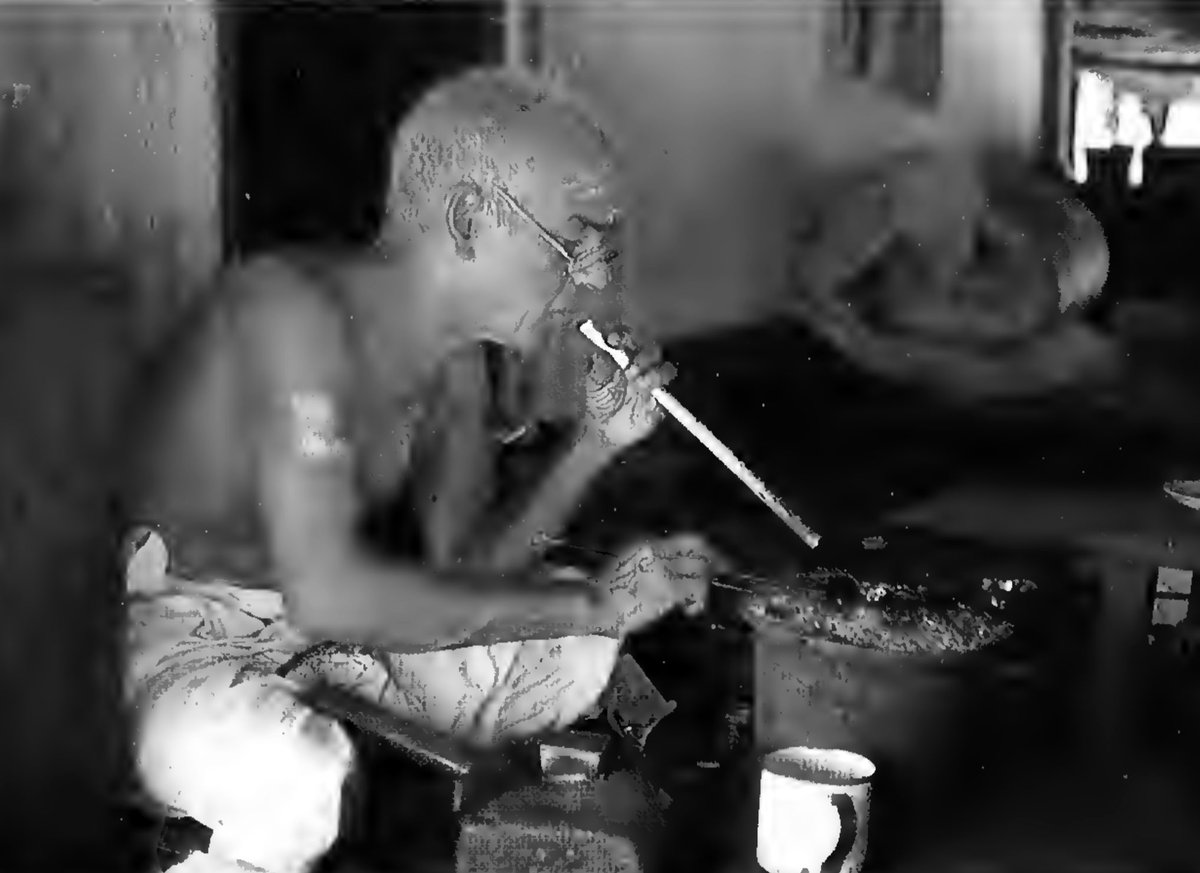At the 1975 Agnicayana-Athirathram in Panjal, Kerala — a group of scholars & filmmakers studied/recorded the event after the great Erkkara Raman Namboodiri agreed to it being recorded: here, Frits Staal, Romila Thapar, Kevin Burke, Robert Gardner, Asko Parpola, Kunju Vasudevan.
at the Agnicayana sacrifice in Panjal, Kerala, 1975; when there was protest against the potential use of animal sacrifice.
the Namboodiris formed a consultative group, & decided to substitute animals with pistapashu [representative clay/rice] as done by the Mádhavas in Mysore.
the Namboodiris formed a consultative group, & decided to substitute animals with pistapashu [representative clay/rice] as done by the Mádhavas in Mysore.
C. V. Vasudevan Akkithiripad pulls the strings that causes the churning stick (ittanthand in Malayalam) to rotate in the lower kindling wooden block (adhara-aani) to produce fire. During the 12 days of Agnicayana, the fire has to be produced 7 times.
Kunju Vasudevan Namboodiripad films the ritual with a Bolex camera.
Note the structure/shape of the elevated portion — a bird shaped altar. Each of the bricks have a specification. [see next tweet]
Note the structure/shape of the elevated portion — a bird shaped altar. Each of the bricks have a specification. [see next tweet]
Two measuring units for bricks:
* in Agnistoma
- aratni’ is 24 finger spans (fs)
- prakrama is 30 fs
* in Agnicayana (here):
- aratni is 24 fs
- prakrama is 3 types
- praakrta (= 30 fs)
- madhyama (= 32 1/4 fs.)
- vrrdha(= 34 1/3 f.s)
* in Agnistoma
- aratni’ is 24 finger spans (fs)
- prakrama is 30 fs
* in Agnicayana (here):
- aratni is 24 fs
- prakrama is 3 types
- praakrta (= 30 fs)
- madhyama (= 32 1/4 fs.)
- vrrdha(= 34 1/3 f.s)
Here, during animal sacrifice** [see next tweet] the Maitravaruna priest assists in recitation. He faces east, recites, a helper keeps count with hand gestures.
**in stead of goat sacrifice, paste of rice flour folded (manner of folding is called ‘paitrkam’, for the ancestors in contrast to folding style in temples, ‘daivikam’, for the gods) in banana leaves. This is regarded as a ‘mamsapratinidhi’, a representation of animal meat.
the election of the priests - hritvijavaaranam
the yajamana, facing north w/ his wife to his right, assembles the chief priests. From his left, they sit in a semi-circle: adhvaryu, Brahmana, hotr, udgaata, sadasya, and chief helper.
They begin by seeking:
let there be peace
the yajamana, facing north w/ his wife to his right, assembles the chief priests. From his left, they sit in a semi-circle: adhvaryu, Brahmana, hotr, udgaata, sadasya, and chief helper.
They begin by seeking:
let there be peace
The ceremonies can only be performed on behalf of a married householder, the yajamana, and the presence of his wife, the yajamana patni, is mandatory. Since, traditionally, she is an ‘antharjanam’ (the dweller within (the household)), she is shielded by a parasol.
“You are a bird with beautiful feathers.
Go to the sky.
Fly to the heaven.”
The yajamana recites at the consecration (diksa), facing east, a stick in hand, a turban, an antelope skin, a rukma breastplate on a string around his neck.
In a pot nearby, there burns a new fire.
Go to the sky.
Fly to the heaven.”
The yajamana recites at the consecration (diksa), facing east, a stick in hand, a turban, an antelope skin, a rukma breastplate on a string around his neck.
In a pot nearby, there burns a new fire.
Before the introductory offering (prayaniyesti), the adhvaryu makes a libation with the sruva ladle, while Chermukku Vaidikan (C.V. Vallabhan Somayijipad) fans the fire.
Frits Staal writes on C.V. in 1975:
"C.V. is the leading force of one of the two families who continue to perform the large rituals. He carries his knowledge lightly, but his authority is unquestioned. He has a formidable mind, combined with an efficiency that is rare."
"C.V. is the leading force of one of the two families who continue to perform the large rituals. He carries his knowledge lightly, but his authority is unquestioned. He has a formidable mind, combined with an efficiency that is rare."
After the ‘hotr has invoked the goddess Ida, the adhvaryu places the purodaasa cake, also called ‘Ida’, in his right hand and in the wooden receptacle [Idapaatram]. They are touched by the Yajamana, who remains with the accoutrements mentioned in the earlier tweet.
Soma is transported on a cart after it has been purchased and before it is installed on a throne and worshipped as King Soma.
“ecstatic with Soma,
I shattered the 99 forts of Sambara all at once,
and finally his citadel as the hundredth,
helping Divodasa Athitigva.”
“ecstatic with Soma,
I shattered the 99 forts of Sambara all at once,
and finally his citadel as the hundredth,
helping Divodasa Athitigva.”
Before 1975, Atirahtrams were performed in 1955 and 1956 and this a bird shaped altar from 1956, which was saved by Nellikkat Nilakanthan Akkithiripad. The right wing, which points to the south, is in front. Such structures vanish away due to humid tropical weather & vegetation.
Between 1875-1975, the Atihratrams were performed 17 times; of which, between 1925-1975, they were performed 5 times. The most recent ones before 1975 were in 1955 and 1956.
[a teacher and students at the Trichur Rgveda School]
[a teacher and students at the Trichur Rgveda School]
goblets made out of Nyagrodha wood to pour Soma.
Each has a name & specification:
A: Antaryama Paatram - 8 cornered
B: Ritu Paatram - w/ a face
C: Ritu Paatram - w/ 2 face
D: Maitravaruna Paatram - w/ breasts
E: Ukthya Paatram - w/ a waist, 8 corners
F: Atigrahya Paatram - round
Each has a name & specification:
A: Antaryama Paatram - 8 cornered
B: Ritu Paatram - w/ a face
C: Ritu Paatram - w/ 2 face
D: Maitravaruna Paatram - w/ breasts
E: Ukthya Paatram - w/ a waist, 8 corners
F: Atigrahya Paatram - round
The goldsmith makes a representation of ‘the Golden man’ (Hiranmayapurusha), represented as Vishnu Narayana of 4.5 cms in size and is made out of gold. Typically, it must be made out of 100 gold coins. But, due to the costs involved, 50, 25, 12.5, 6.25, or 1/4 coins are allowed.

 Read on Twitter
Read on Twitter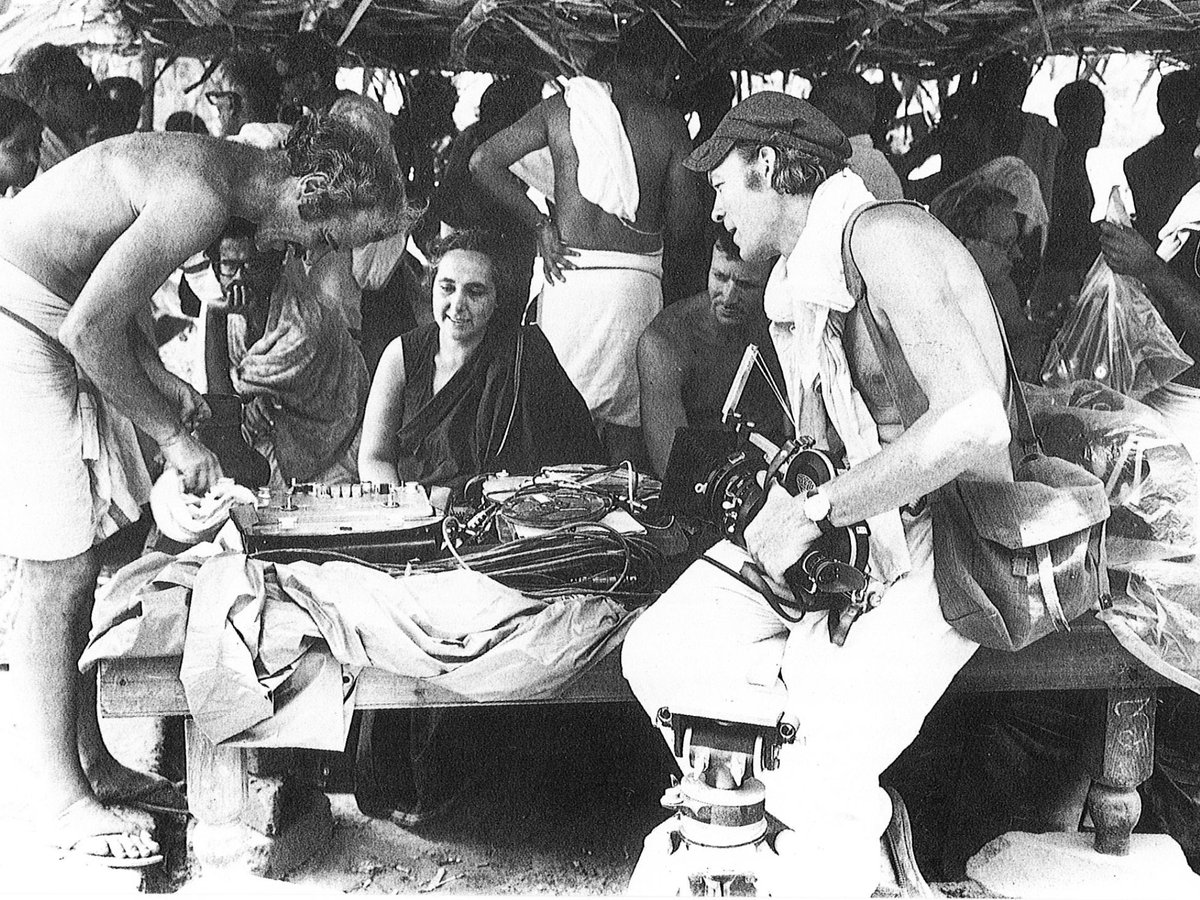
![at the Agnicayana sacrifice in Panjal, Kerala, 1975; when there was protest against the potential use of animal sacrifice. the Namboodiris formed a consultative group, & decided to substitute animals with pistapashu [representative clay/rice] as done by the Mádhavas in Mysore. at the Agnicayana sacrifice in Panjal, Kerala, 1975; when there was protest against the potential use of animal sacrifice. the Namboodiris formed a consultative group, & decided to substitute animals with pistapashu [representative clay/rice] as done by the Mádhavas in Mysore.](https://pbs.twimg.com/media/ED5-QFoW4AEJdJC.jpg)
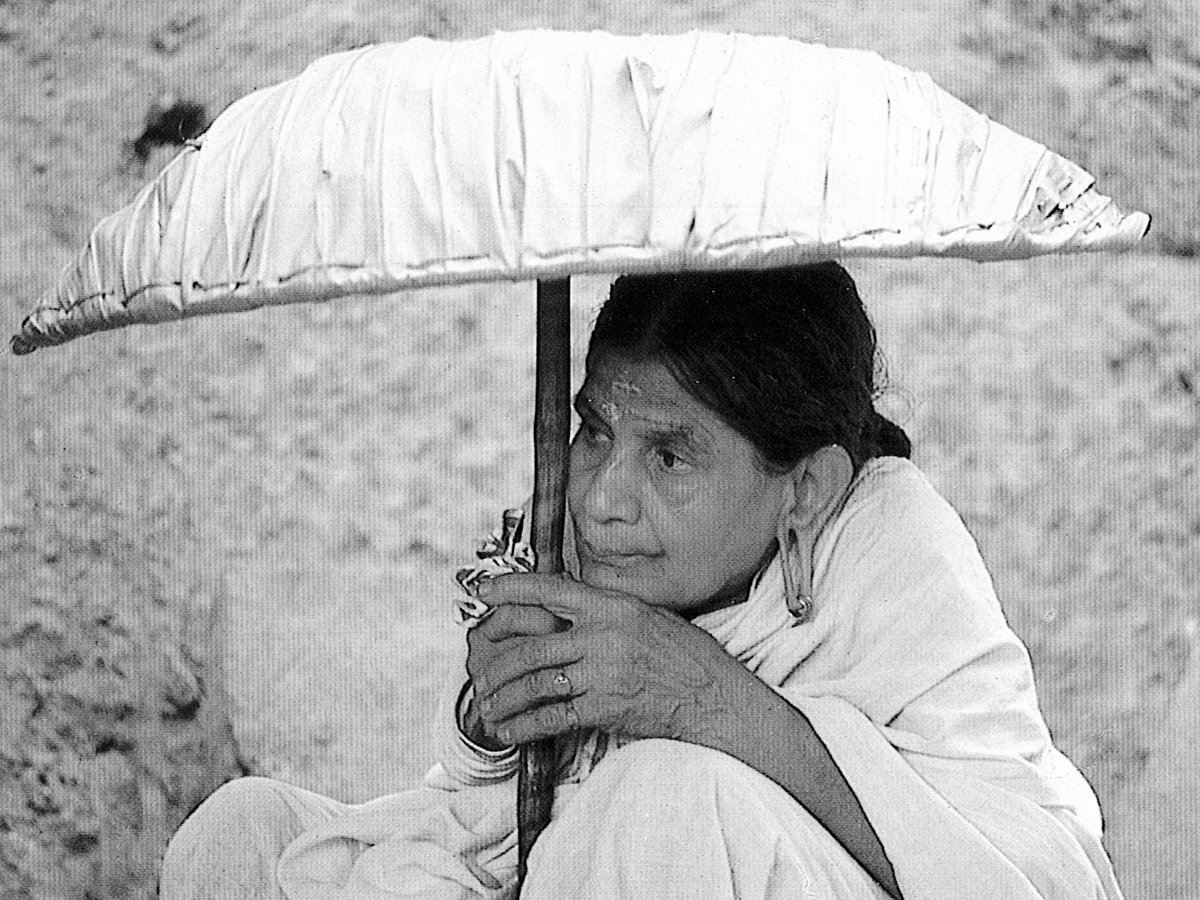
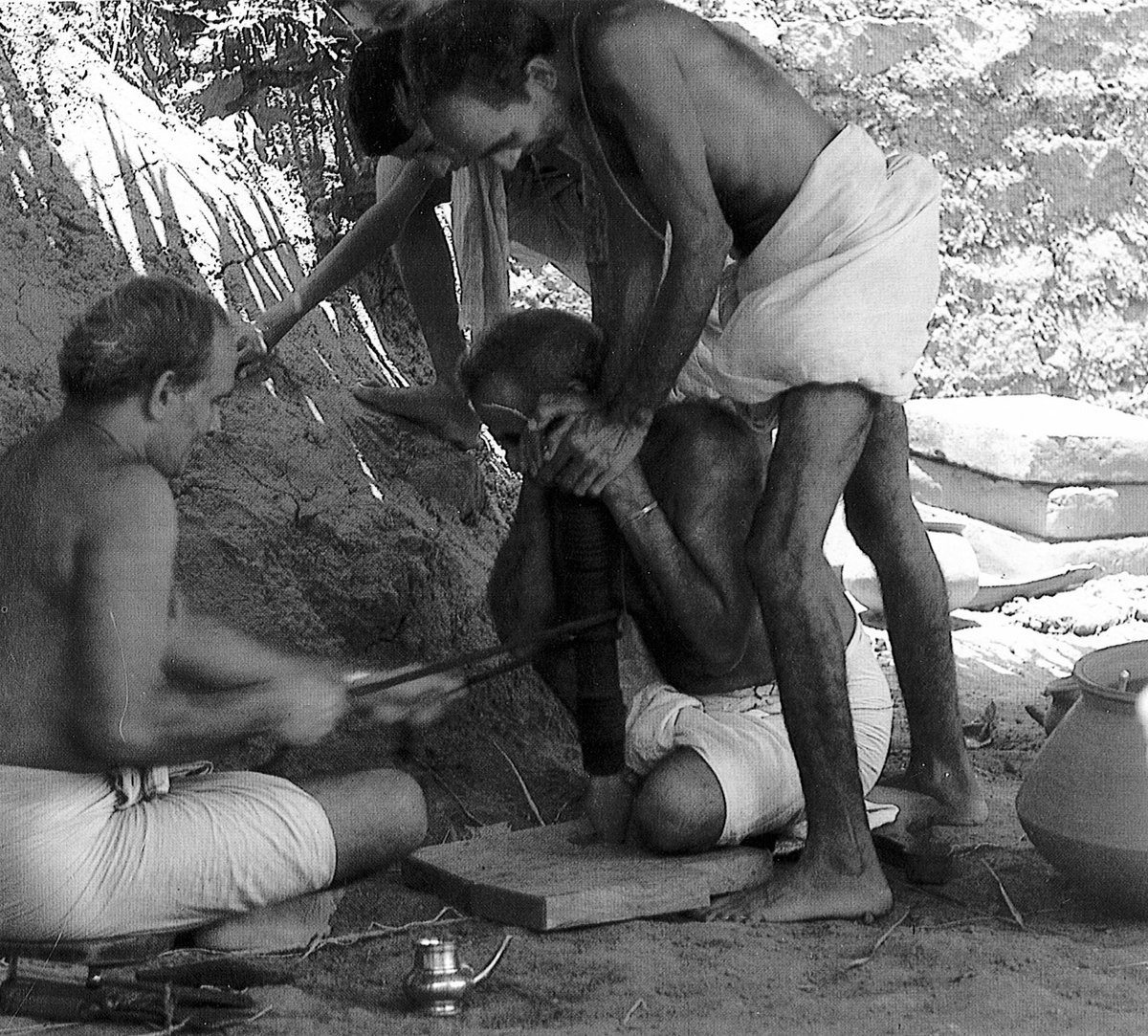
![Kunju Vasudevan Namboodiripad films the ritual with a Bolex camera. Note the structure/shape of the elevated portion — a bird shaped altar. Each of the bricks have a specification. [see next tweet] Kunju Vasudevan Namboodiripad films the ritual with a Bolex camera. Note the structure/shape of the elevated portion — a bird shaped altar. Each of the bricks have a specification. [see next tweet]](https://pbs.twimg.com/media/EFoht0aWwAA6Srk.jpg)
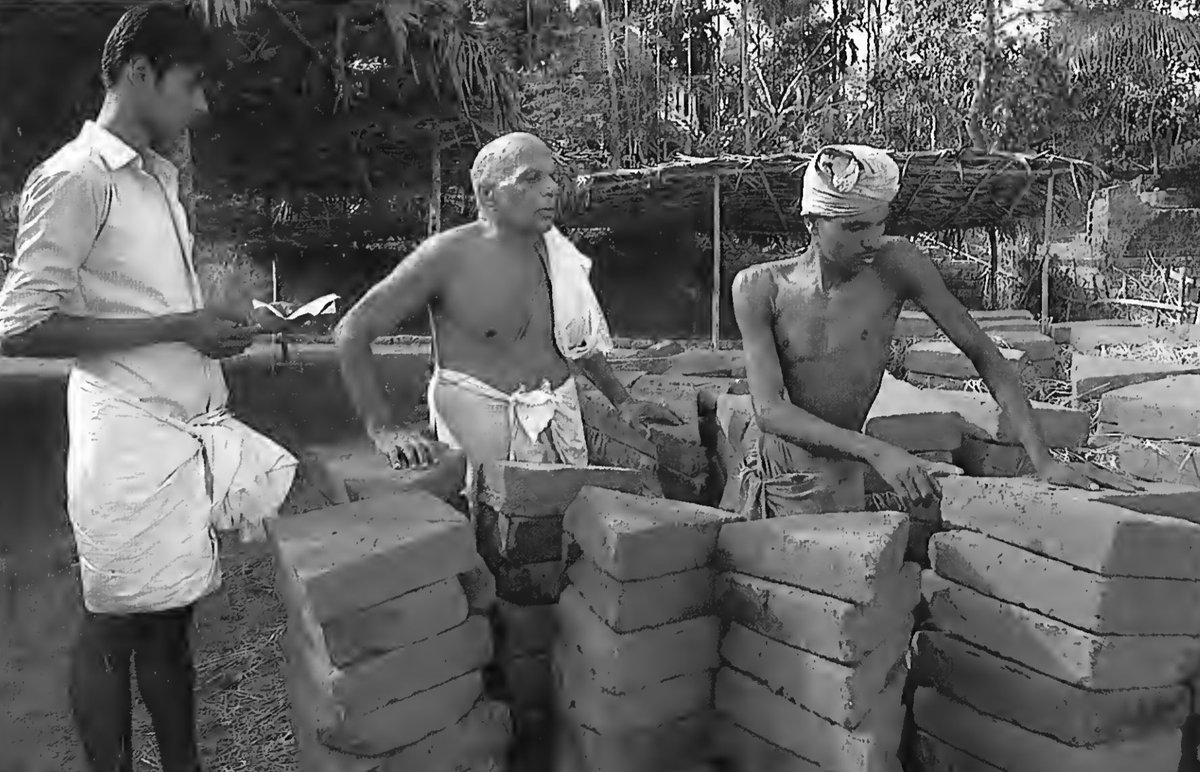
![Here, during animal sacrifice** [see next tweet] the Maitravaruna priest assists in recitation. He faces east, recites, a helper keeps count with hand gestures. Here, during animal sacrifice** [see next tweet] the Maitravaruna priest assists in recitation. He faces east, recites, a helper keeps count with hand gestures.](https://pbs.twimg.com/media/EFokpZiWkAAFcfn.jpg)
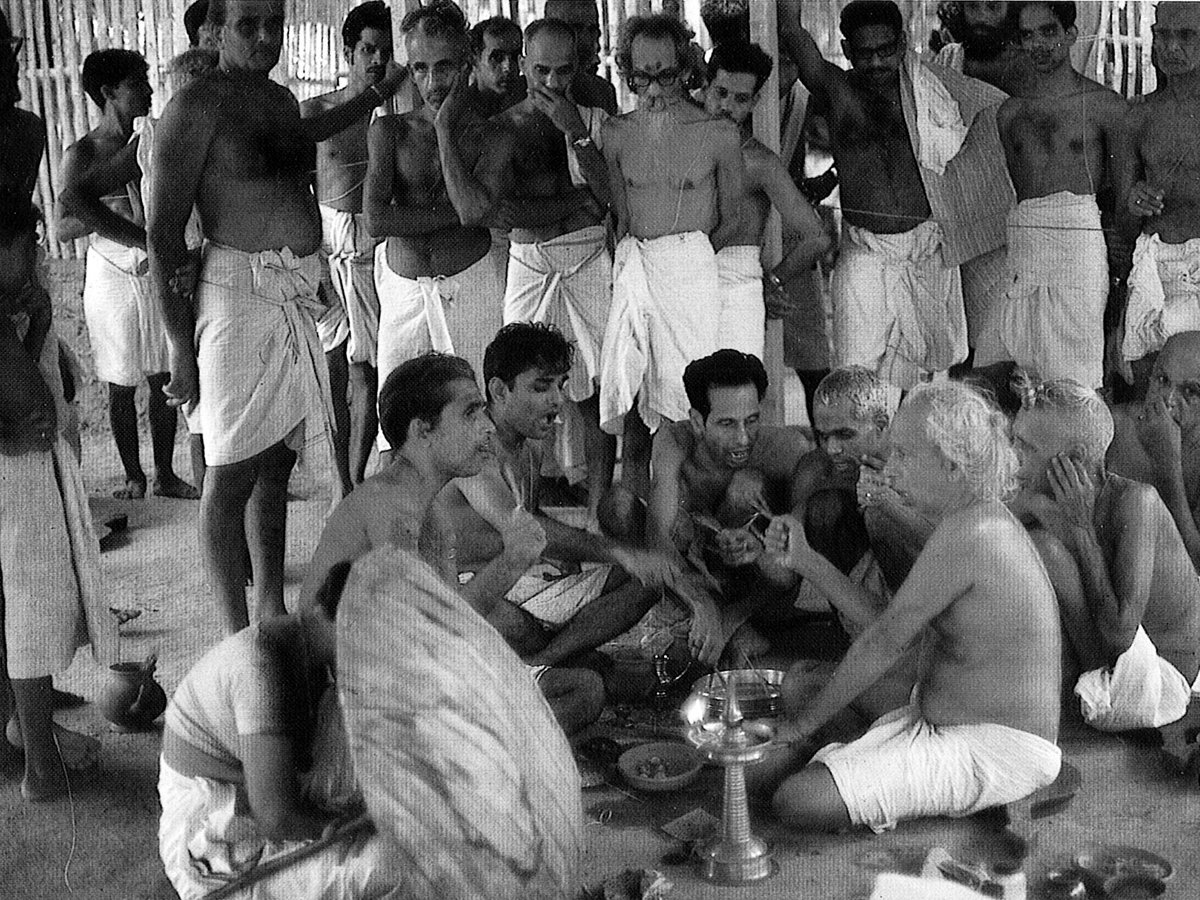
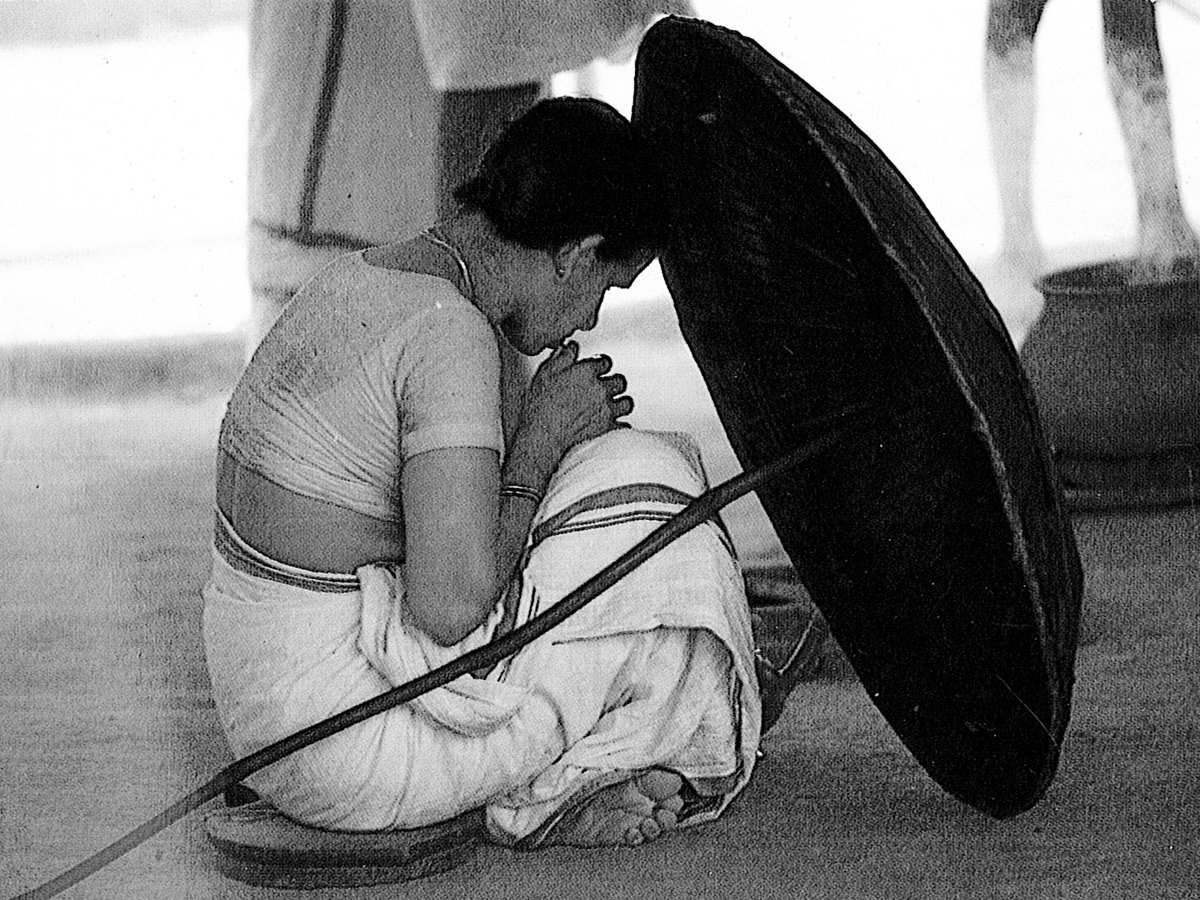

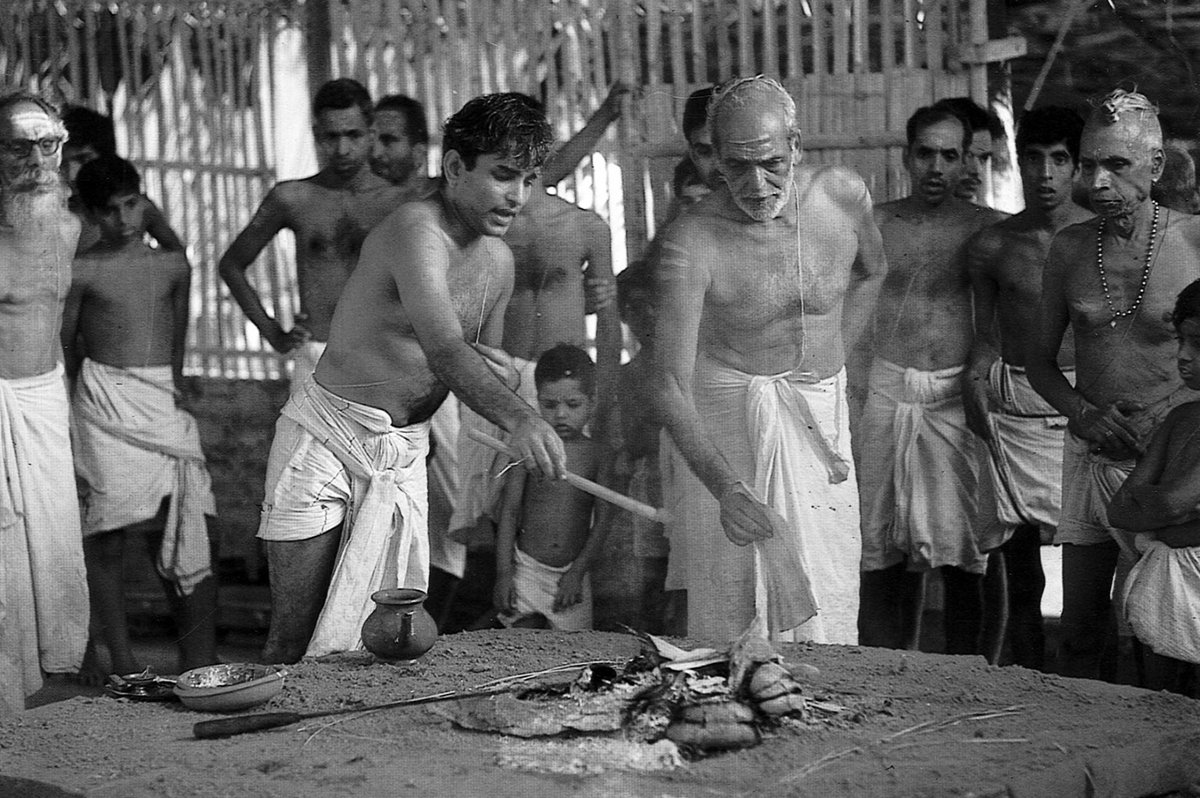
![After the ‘hotr has invoked the goddess Ida, the adhvaryu places the purodaasa cake, also called ‘Ida’, in his right hand and in the wooden receptacle [Idapaatram]. They are touched by the Yajamana, who remains with the accoutrements mentioned in the earlier tweet. After the ‘hotr has invoked the goddess Ida, the adhvaryu places the purodaasa cake, also called ‘Ida’, in his right hand and in the wooden receptacle [Idapaatram]. They are touched by the Yajamana, who remains with the accoutrements mentioned in the earlier tweet.](https://pbs.twimg.com/media/EFpCXbPXUAEw1Kk.jpg)
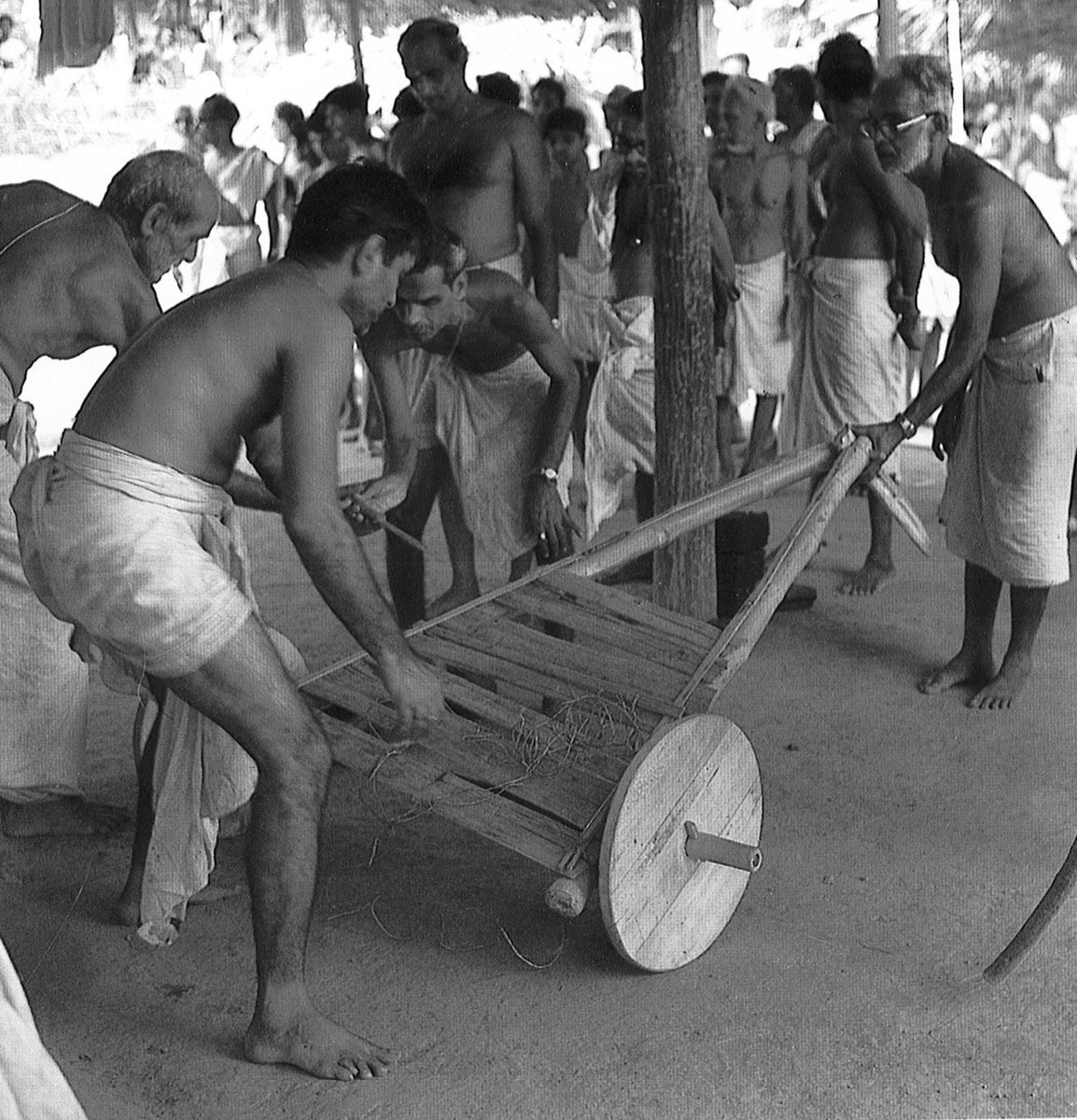

![Between 1875-1975, the Atihratrams were performed 17 times; of which, between 1925-1975, they were performed 5 times. The most recent ones before 1975 were in 1955 and 1956. [a teacher and students at the Trichur Rgveda School] Between 1875-1975, the Atihratrams were performed 17 times; of which, between 1925-1975, they were performed 5 times. The most recent ones before 1975 were in 1955 and 1956. [a teacher and students at the Trichur Rgveda School]](https://pbs.twimg.com/media/EFpahCgXkAAaku1.jpg)
